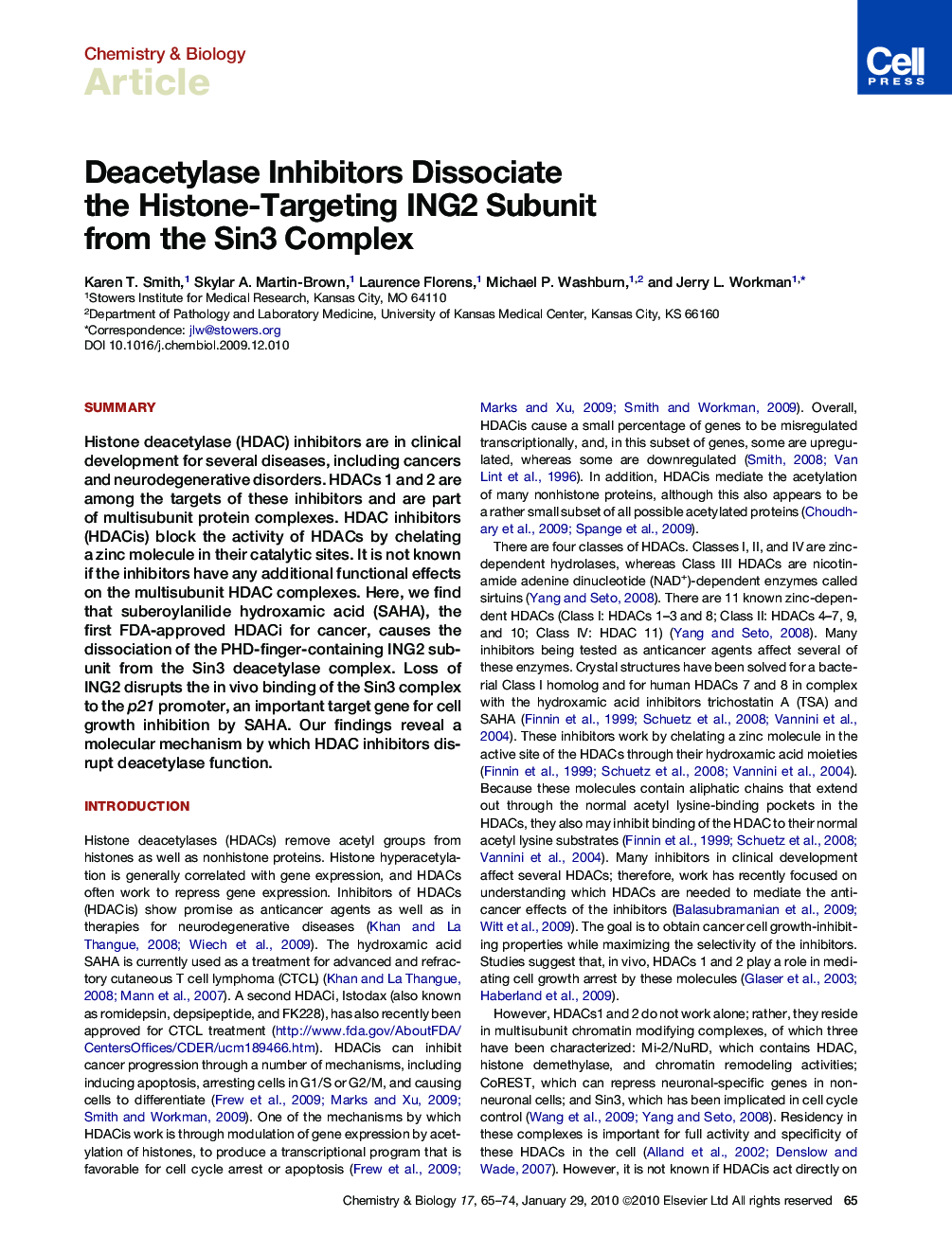| Article ID | Journal | Published Year | Pages | File Type |
|---|---|---|---|---|
| 1391996 | Chemistry & Biology | 2010 | 10 Pages |
SummaryHistone deacetylase (HDAC) inhibitors are in clinical development for several diseases, including cancers and neurodegenerative disorders. HDACs 1 and 2 are among the targets of these inhibitors and are part of multisubunit protein complexes. HDAC inhibitors (HDACis) block the activity of HDACs by chelating a zinc molecule in their catalytic sites. It is not known if the inhibitors have any additional functional effects on the multisubunit HDAC complexes. Here, we find that suberoylanilide hydroxamic acid (SAHA), the first FDA-approved HDACi for cancer, causes the dissociation of the PHD-finger-containing ING2 subunit from the Sin3 deacetylase complex. Loss of ING2 disrupts the in vivo binding of the Sin3 complex to the p21 promoter, an important target gene for cell growth inhibition by SAHA. Our findings reveal a molecular mechanism by which HDAC inhibitors disrupt deacetylase function.
► HDACi dissociate the PHD finger protein ING2 from the Sin3 deacetylase complex ► Chromatin binding of the Sin3 complex is disrupted by HDACi through loss of ING2
